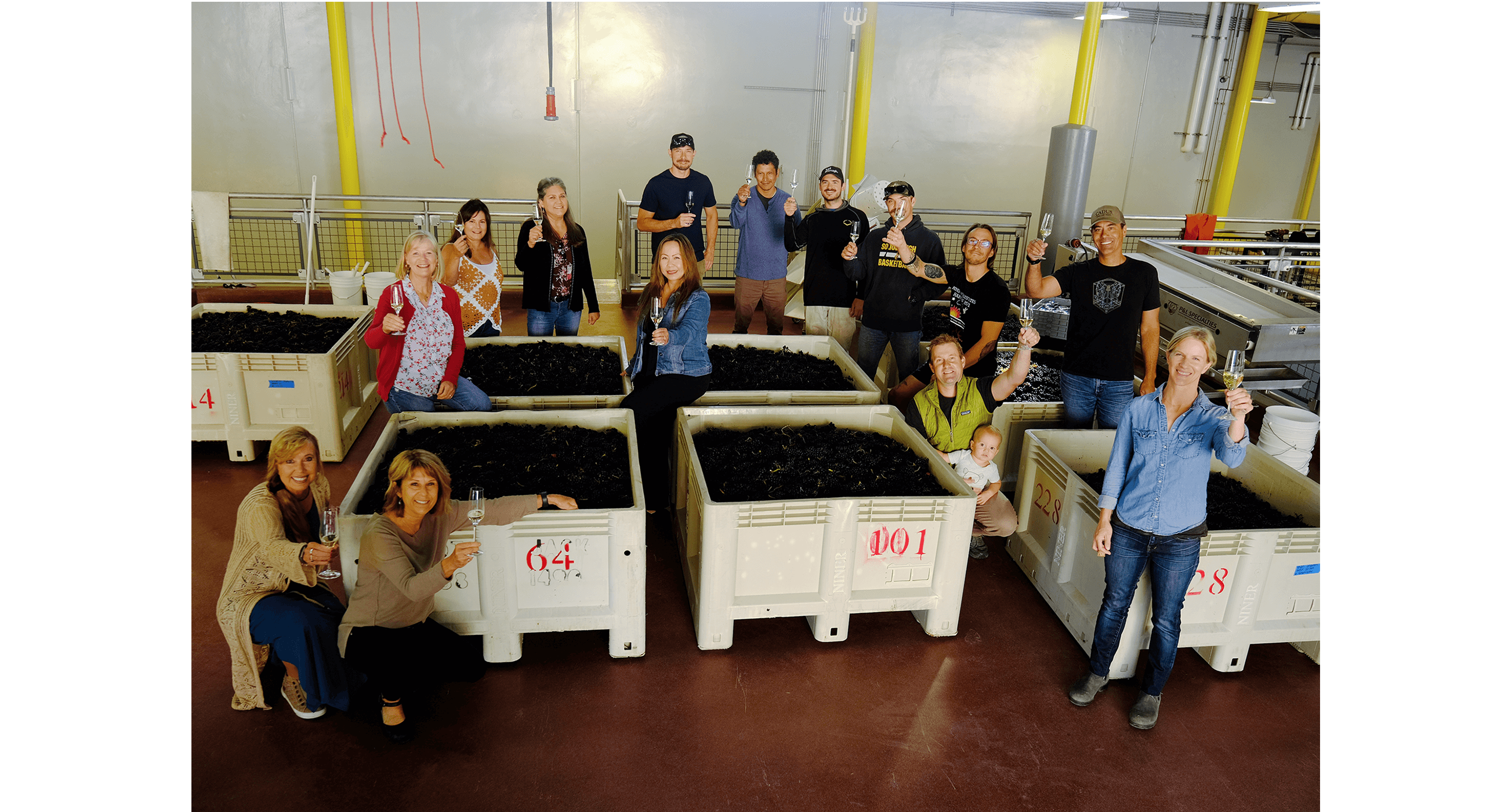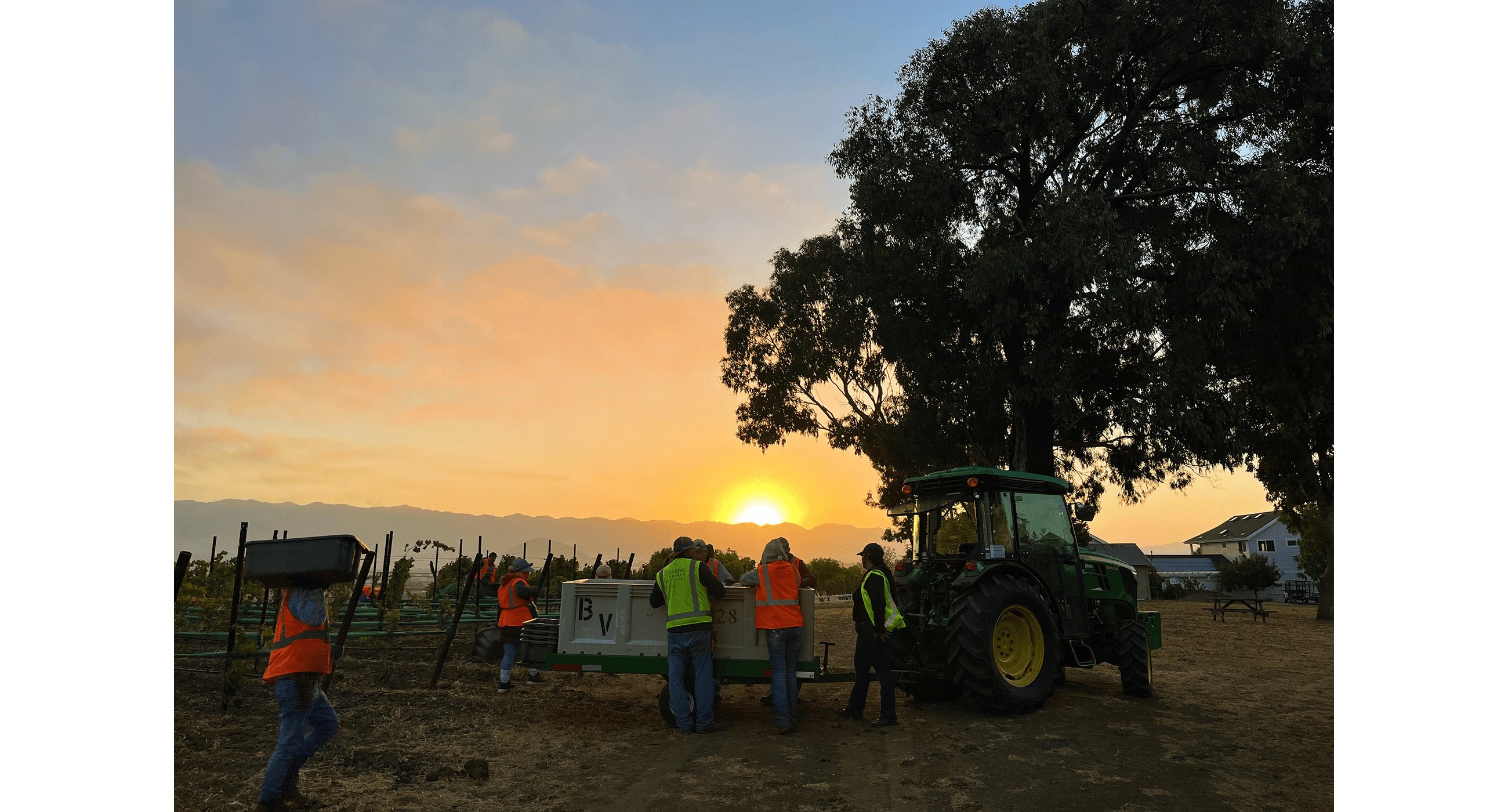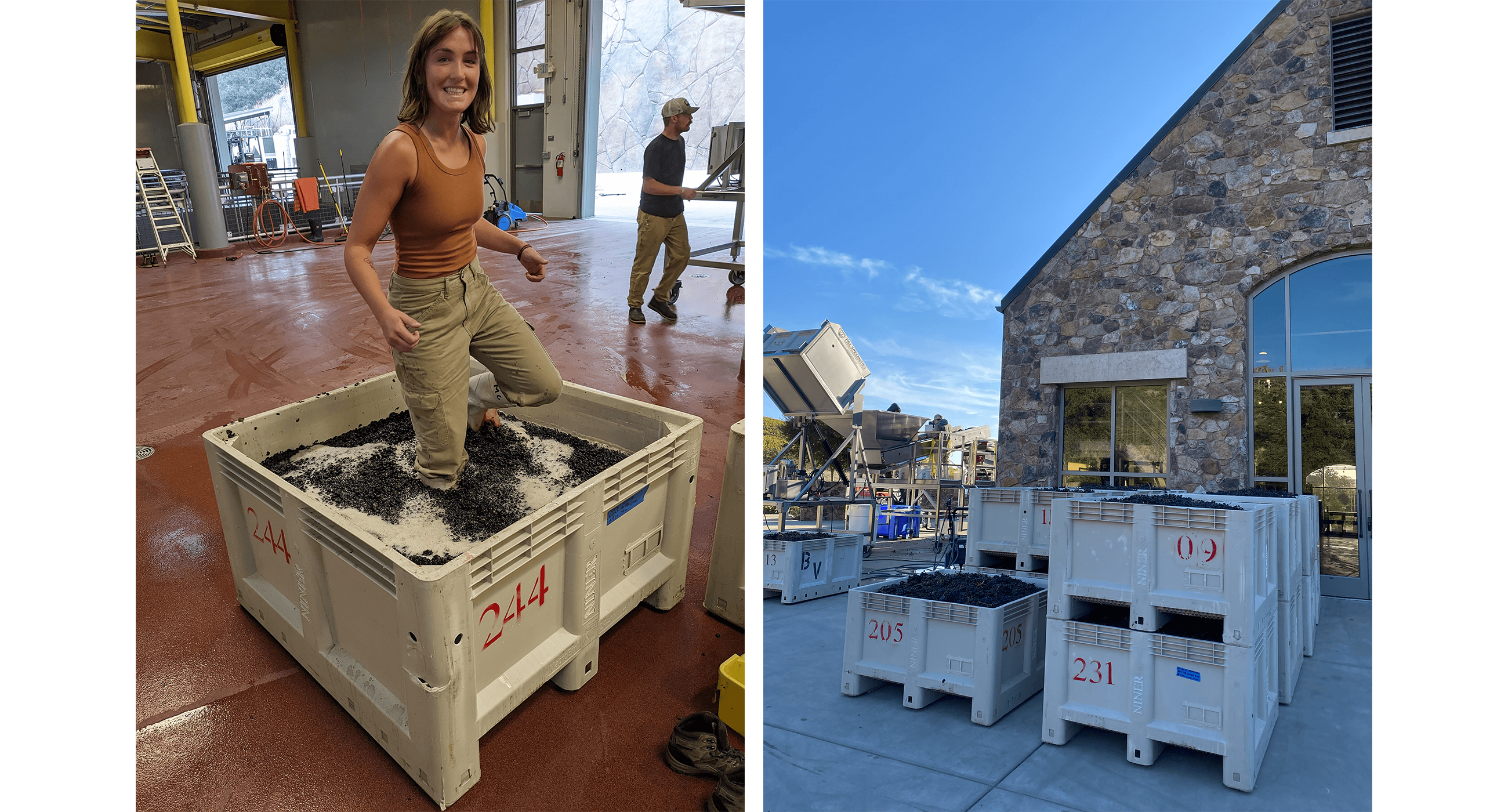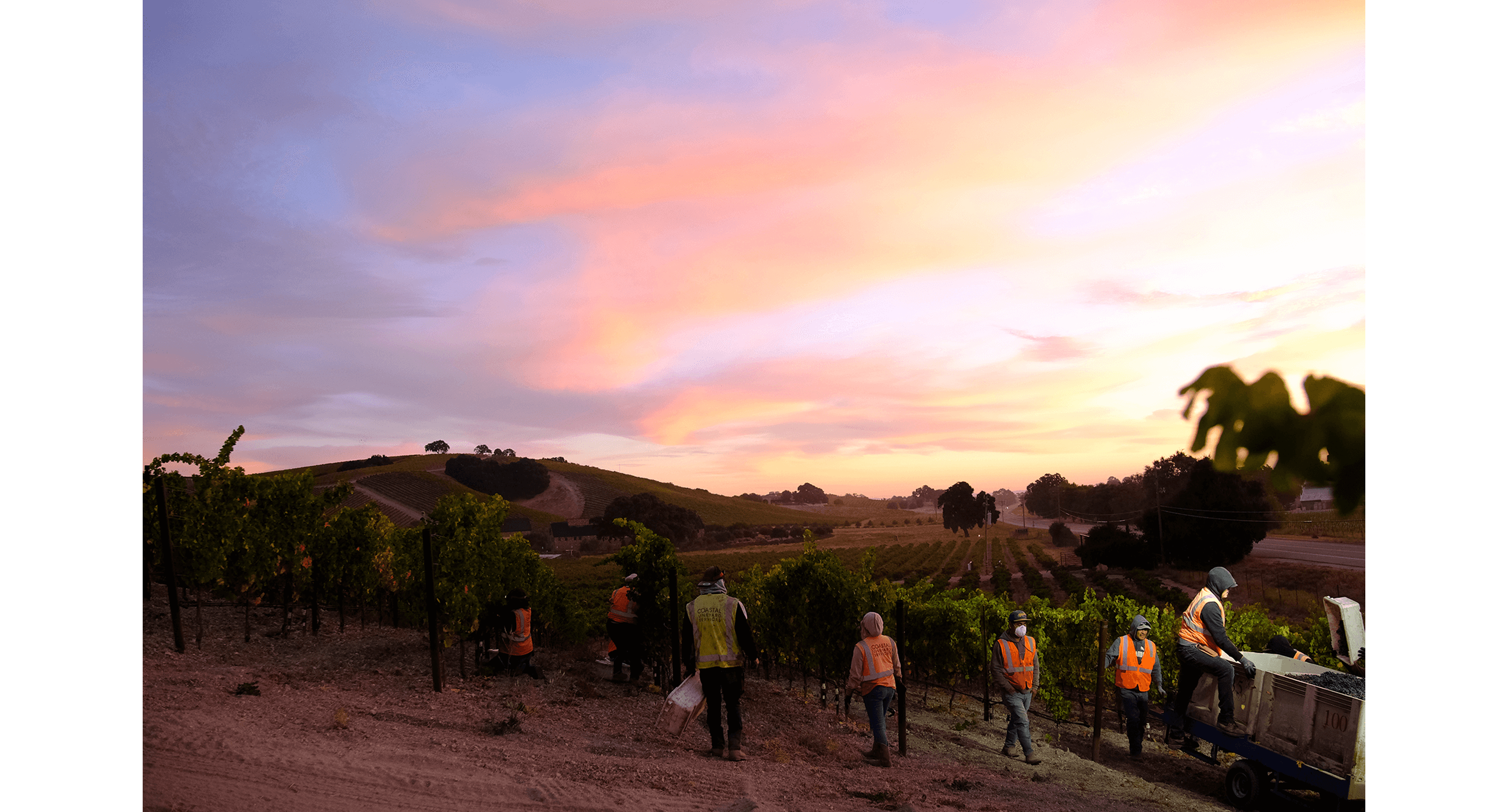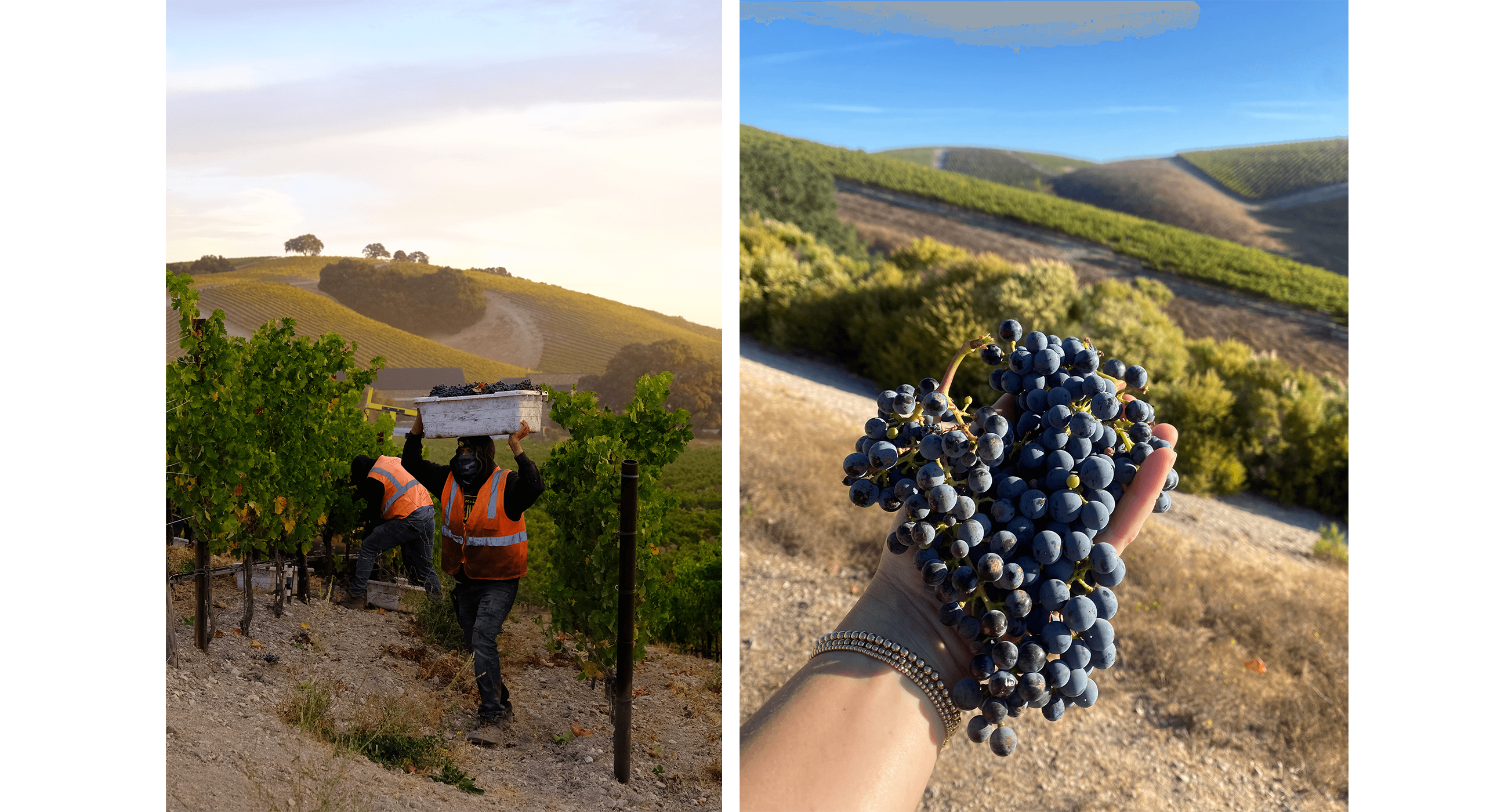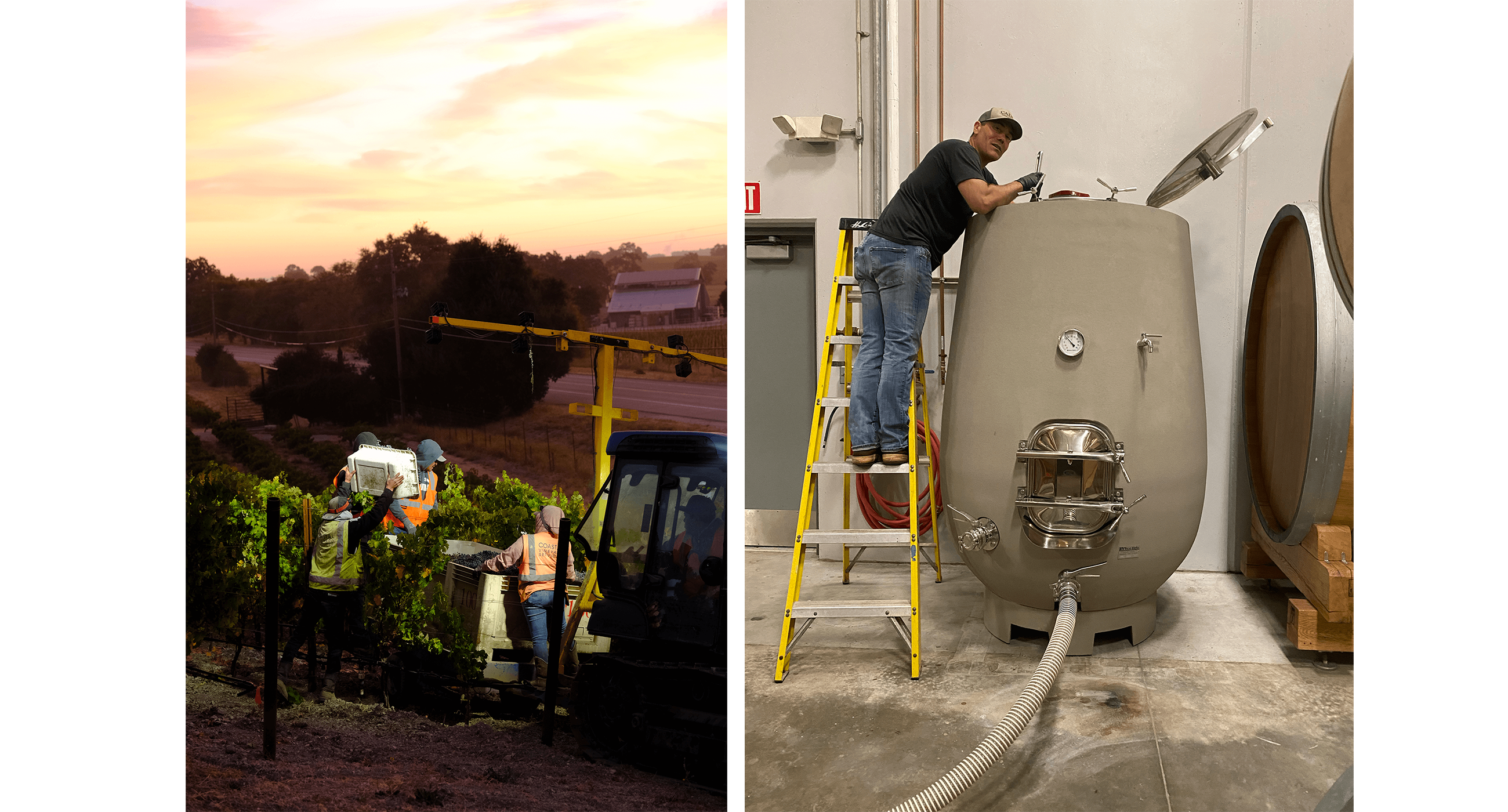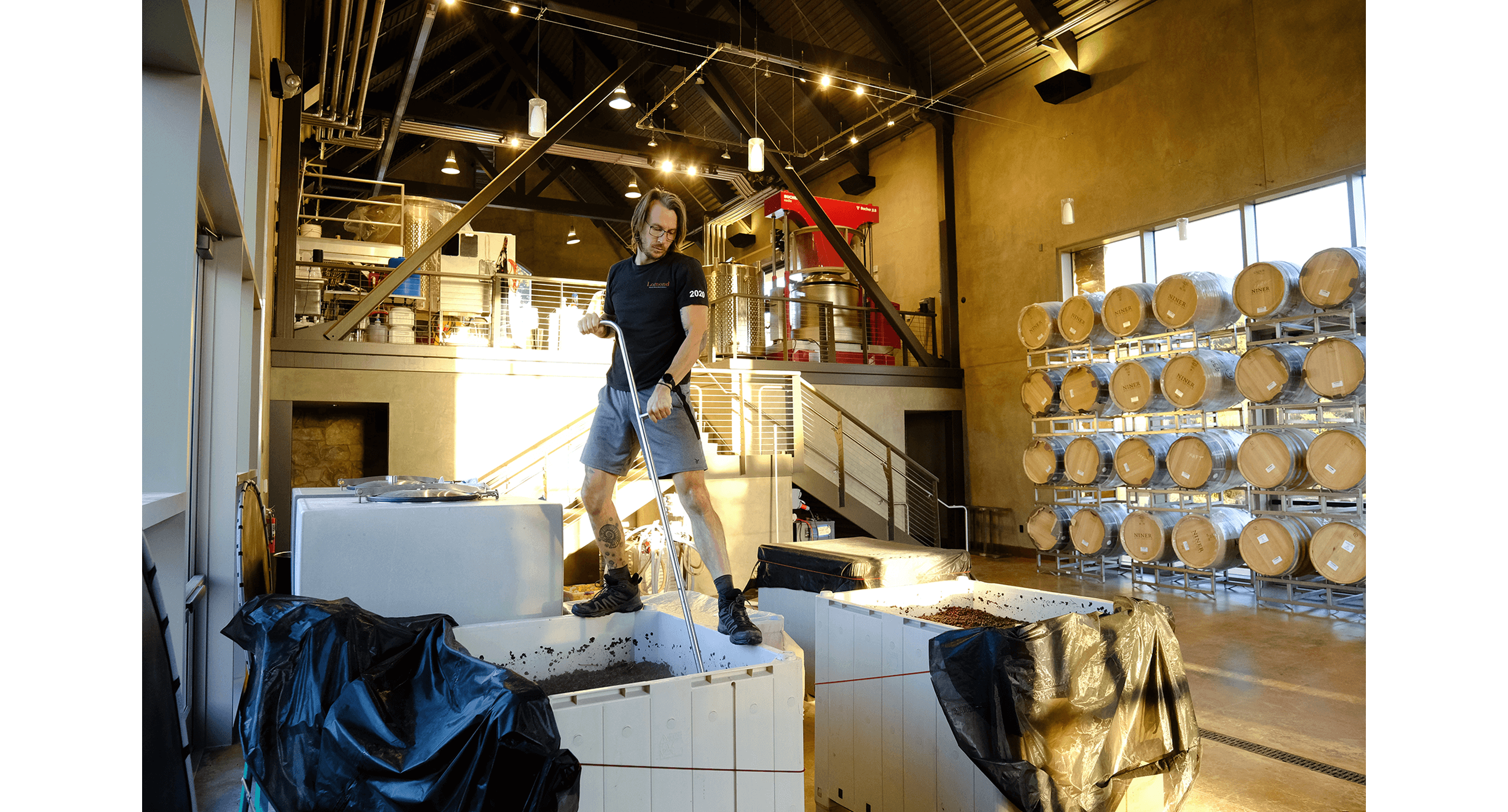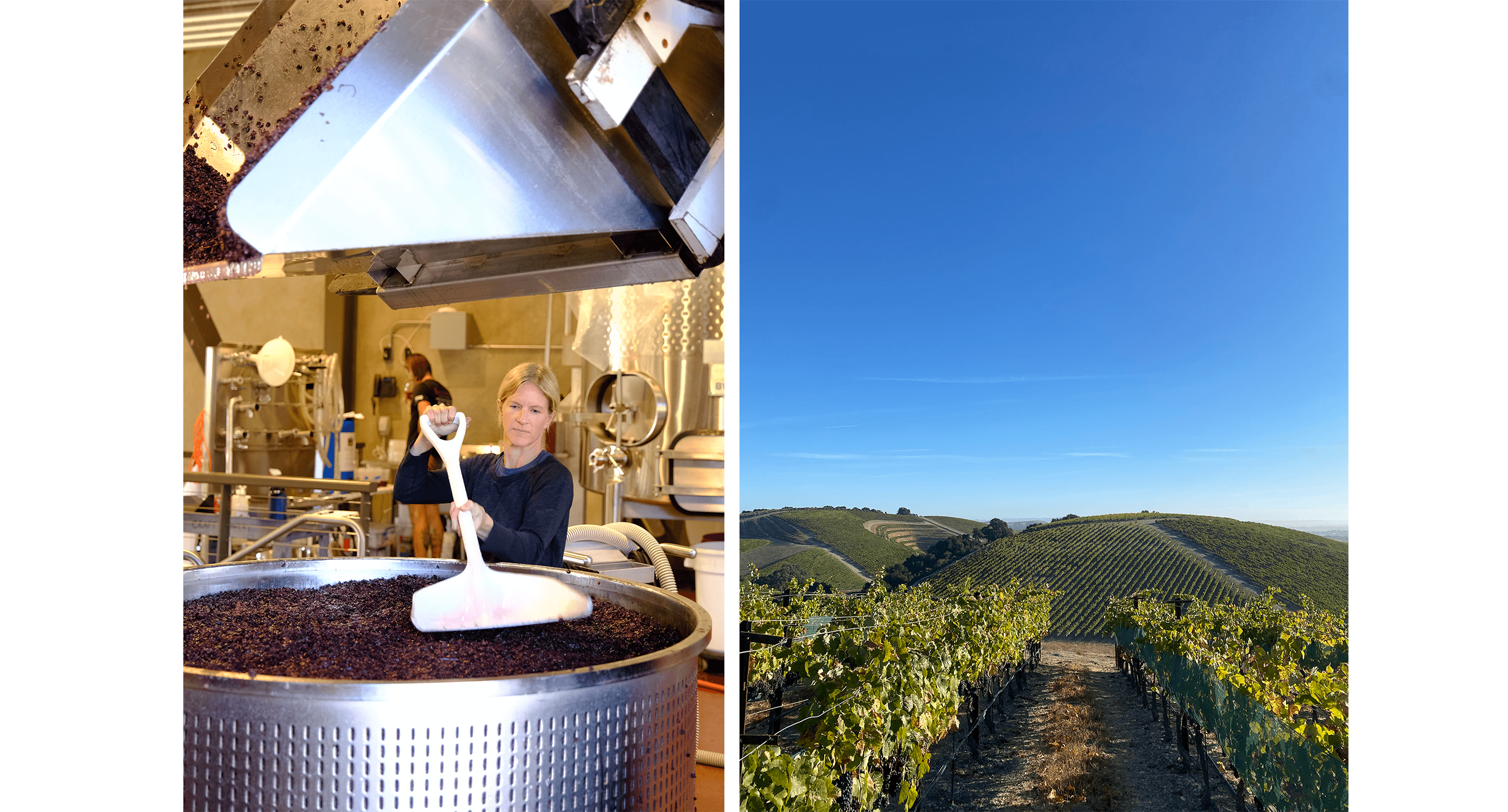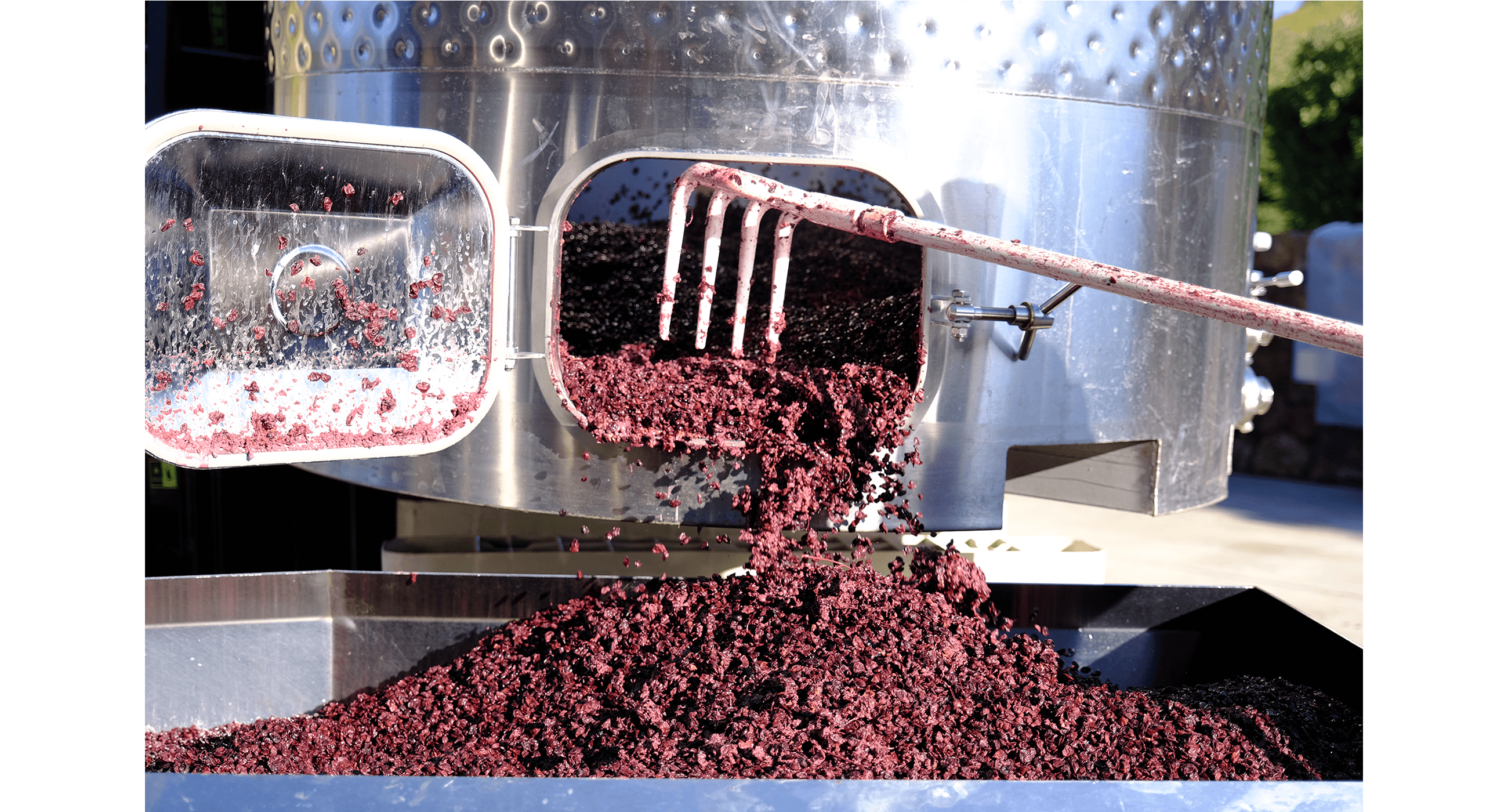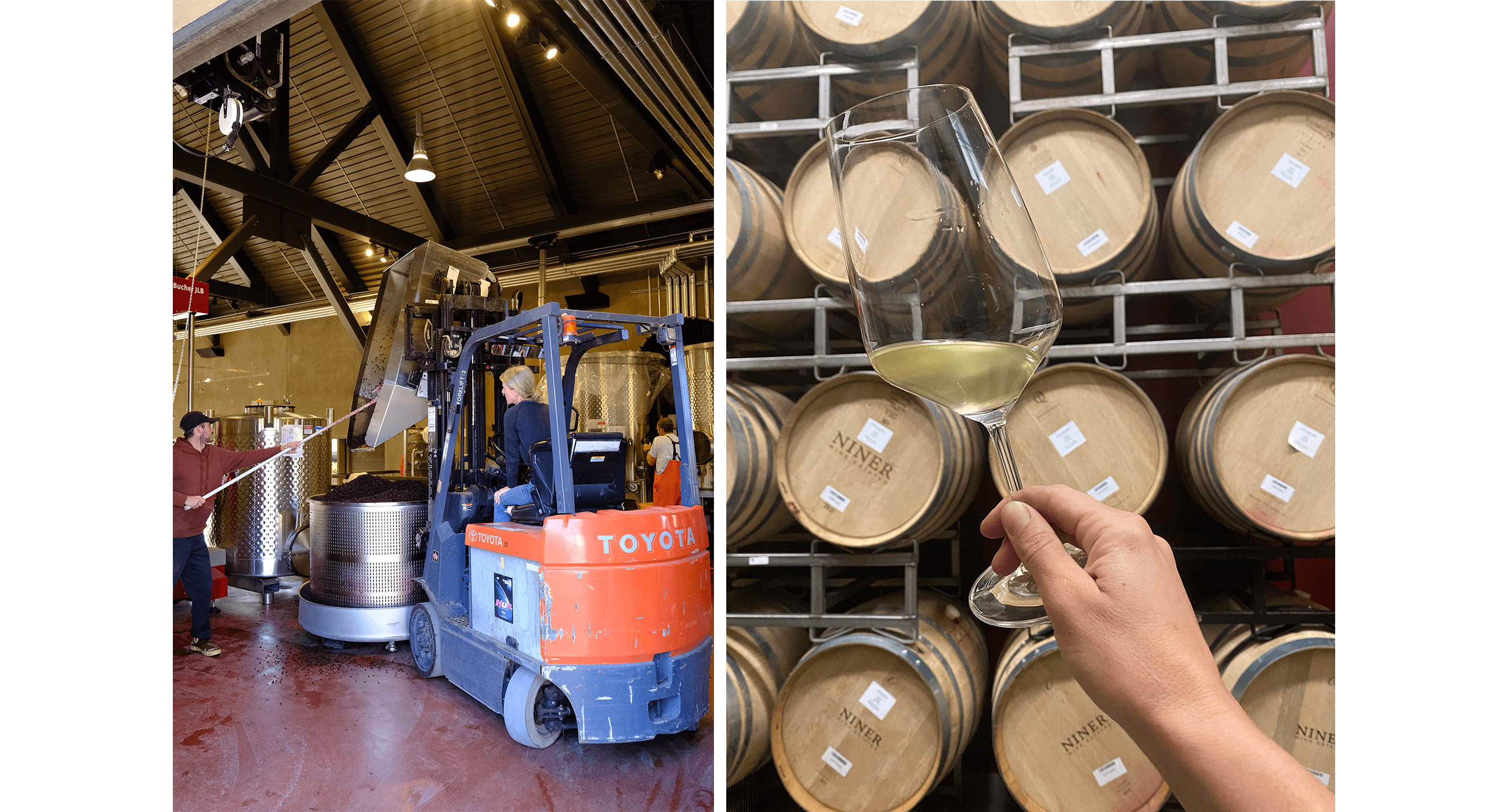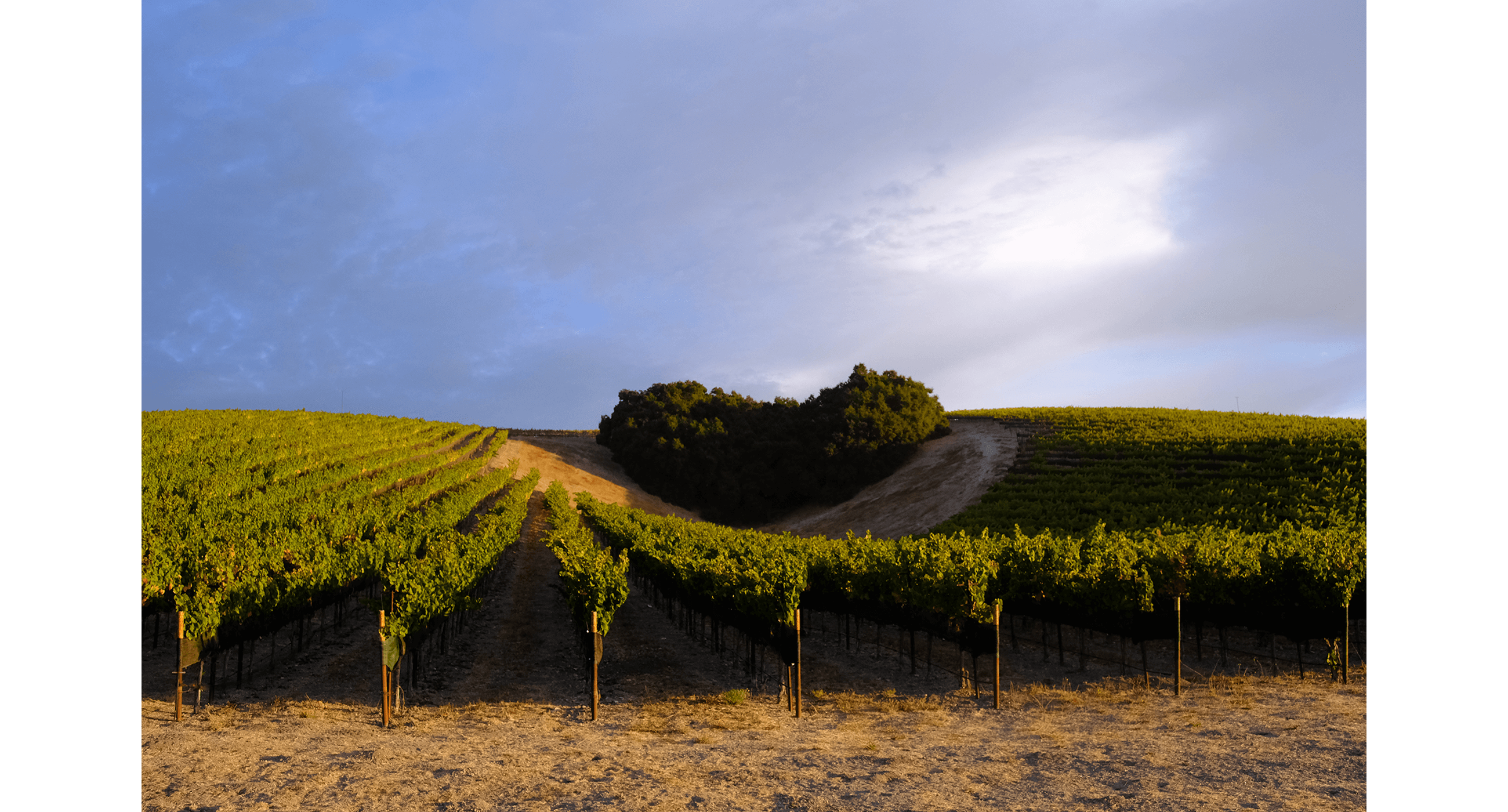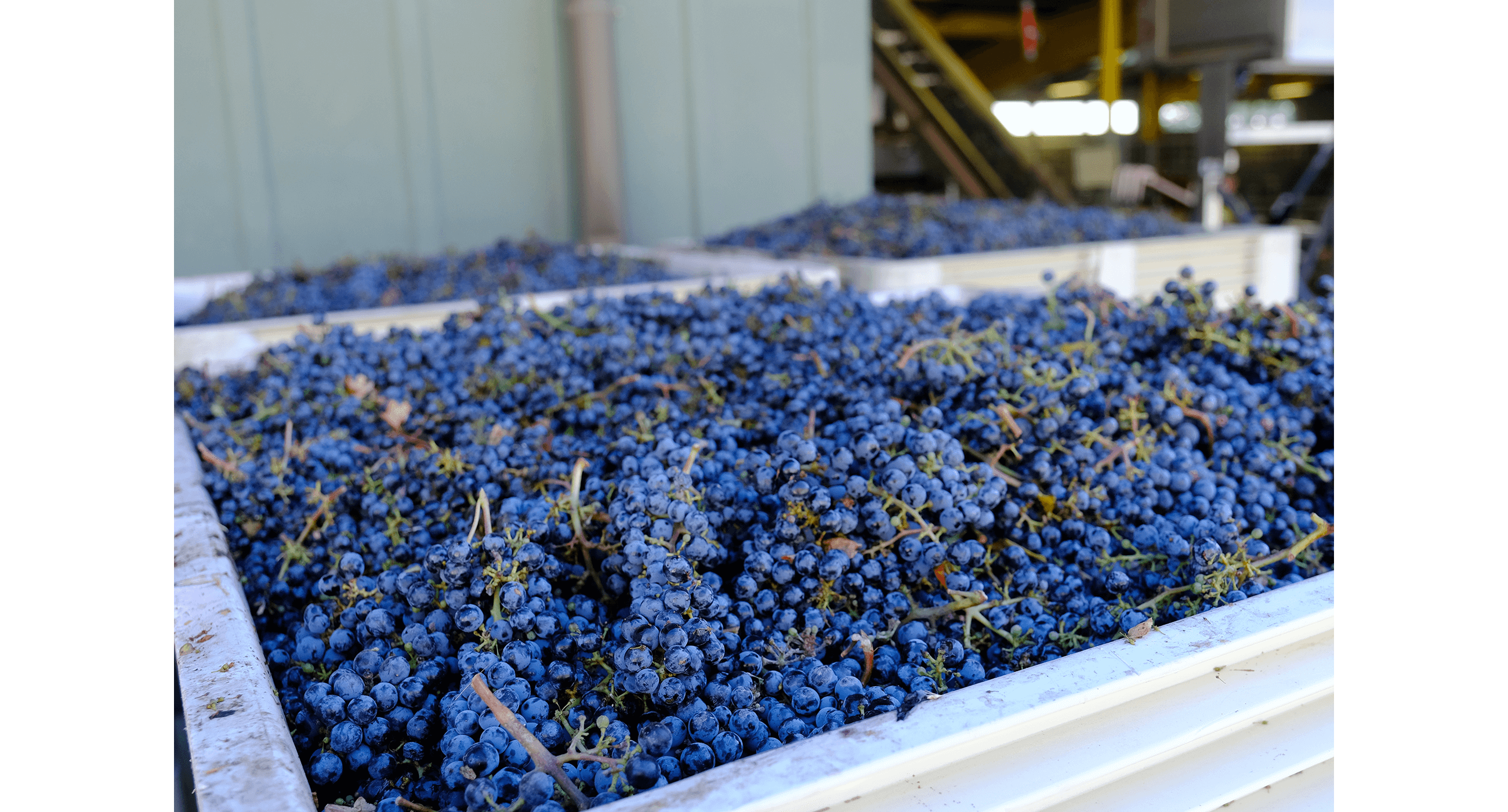In late August we wrote to you and described the 2023 Vintage as “Cool, Calm and Collected.” And that adage has held true over the last two months. This vintage looks to be nothing short of spectacular, and the long growing season at both of our estate sites has allowed for optimal ripening and a steady picking schedule.
Winemaker Molly Bohlman says that cooler vintages like this one are perfect for Pinot Noir, and she is excited to barrel age and bottle up this year’s vintage. Our Cabernet Sauvignon is also thriving, ripening slowly and developing complex flavors and robust tannins as it hangs on the vines. Today we’re sharing four Harvest stories through different lenses of the season. Happy Harvest!
01. Our first Meunier (Moon-YAY) grapes
On our first day of Harvest, we had a historic moment: we brought in our first Meunier (moon-YAY) grapes! On September 2nd, we hand-harvested Pinot Noir and a half-ton of Meunier for a ‘Blanc de Noirs’ Sparkling Wine. We’ve grown Pinot Noir for years, but this was our first Meunier fruit.
Meunier is grown in many regions around the world, but is most widely recognized in the Champagne region of France. There it plays an unsung hero in many famed sparkling cuvees. In fact, Meunier makes up nearly 40% of the acreage in the region and joins Pinot Noir as the only red grapes allowed.
Meunier thrives in cool climates and it’s lauded for its acidity and bright red fruit flavors. Its prestigious lineage and coastal inclination intrigued us enough to plant an acre at Jespersen Ranch in 2021. We were surprised (but delighted!) to pick about a half-ton this year. We whole cluster pressed it along with Pinot Noir for a ‘Blanc de Noirs’ Sparkling Wine. We can’t wait to share it with you!
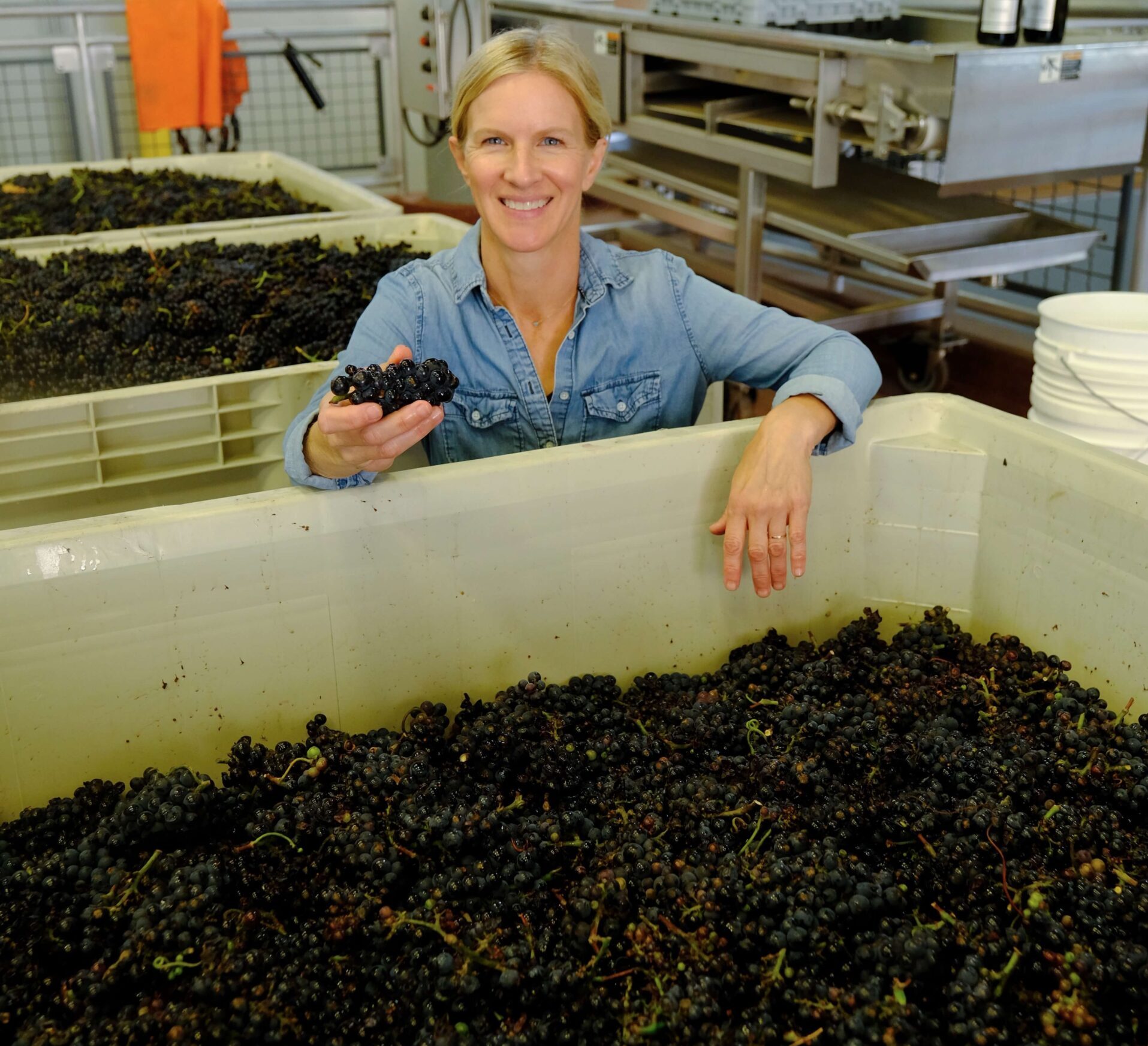
Winemaker Molly with our single bin of beautiful, dark Meunier grapes!
02. 2023 Vintage compost
In the process of making wine you end up with a lot of waste. Namely grape seeds, skins and stems. Instead of sending them to a landfill, we compost 100% of our grape waste and spread it back in the vineyard. The compost is rich with microbes, which will help lay a foundation to foster healthy soils.
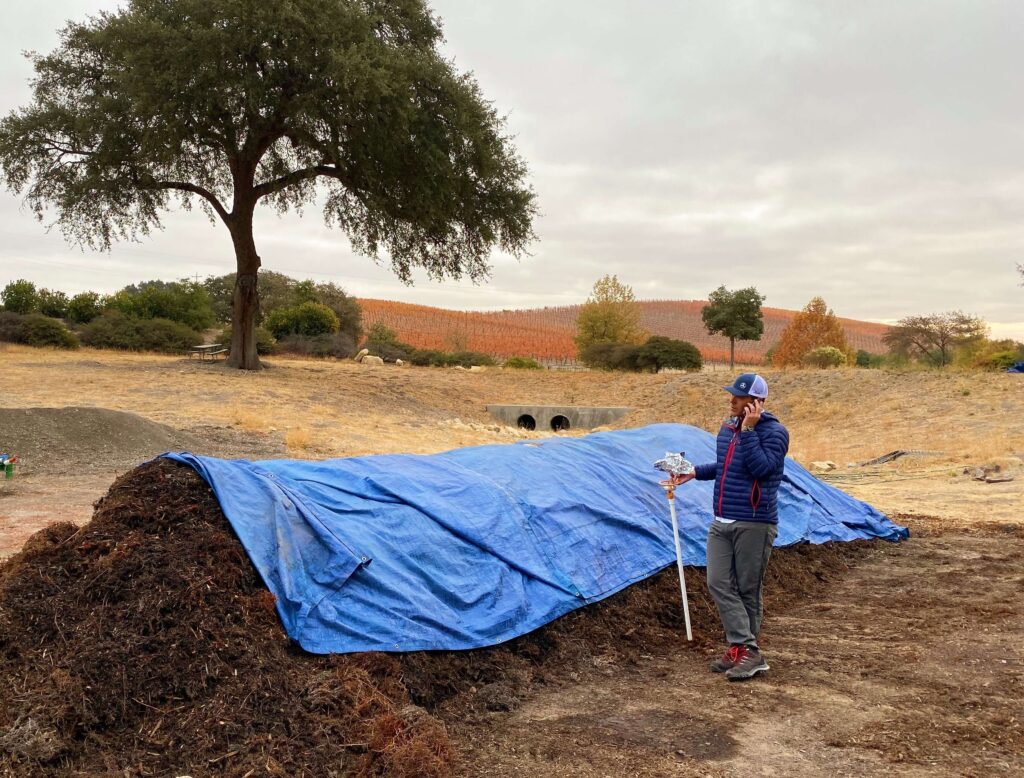
Winemaker Patrick multitasking – scheduling grape picks and checking on the compost piles
Making great compost can be compared to starting a campfire where you need the perfect fuel (starter, kindling and wood in the right ratio), ignition and good airflow. We start our compost piles by combining three elements in specific ratios: 40% wood chips and/or grape stems (carbon), 30% grape skins and seeds (nitrogen) and 30% green waste (microbial food). This is the fuel to which we then add water (the ignition) and air by turning the piles daily. We monitor the temperature twice a day and measure microbial population growth with a microscope to ensure a healthy ferment.
Next Spring we’ll take the “2023 Vintage” of compost and make teas to spray in the vine foliage, and also spread compost in the vines. One way to think about it is that spreading compost builds a subdivision, and the compost tea sprays add the families that live there. We can’t make enough from our scraps to supply the whole vineyard, so we also supplement with a high-quality organic compost.
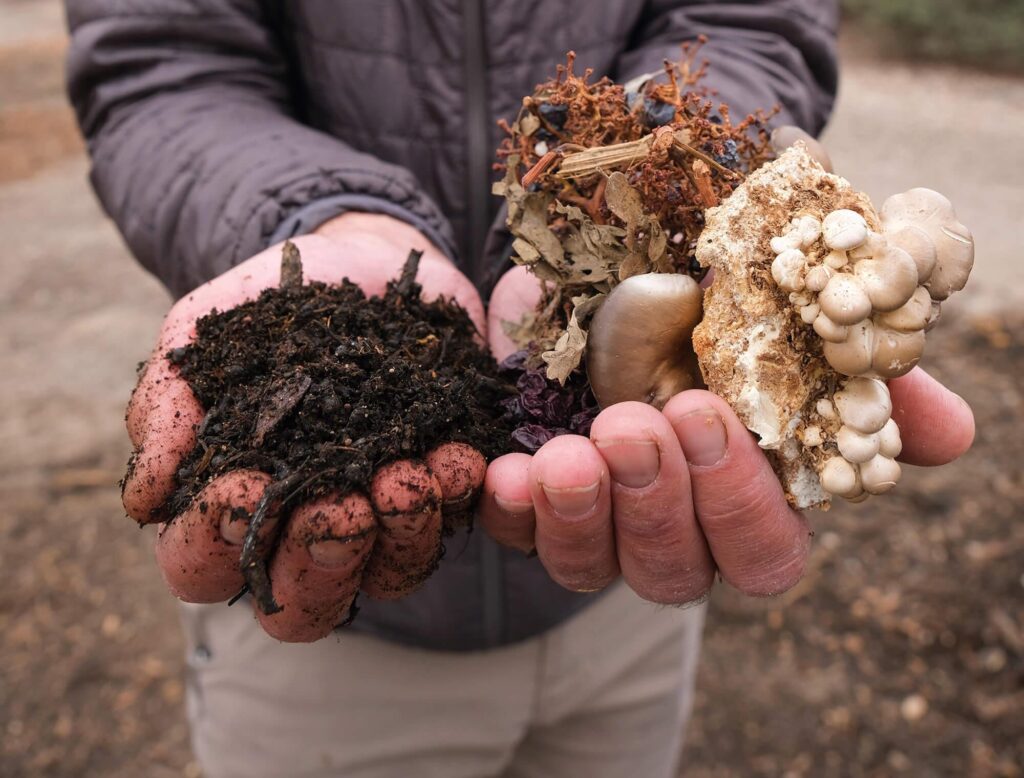
Finished compost vs. its starting components
How do you like your eggs?
During the process of turning ingredients, the piles get up to between 135 and 165 degrees from all the microbial activity! This hot temperature is ideal, and it is so hot that you can hard boil an egg in about 30 minutes. Yes, we had to try it. Yes, Winemaker Patrick Muran ate it with a little salt and pepper. And yes, it was delicious (and sustainable).
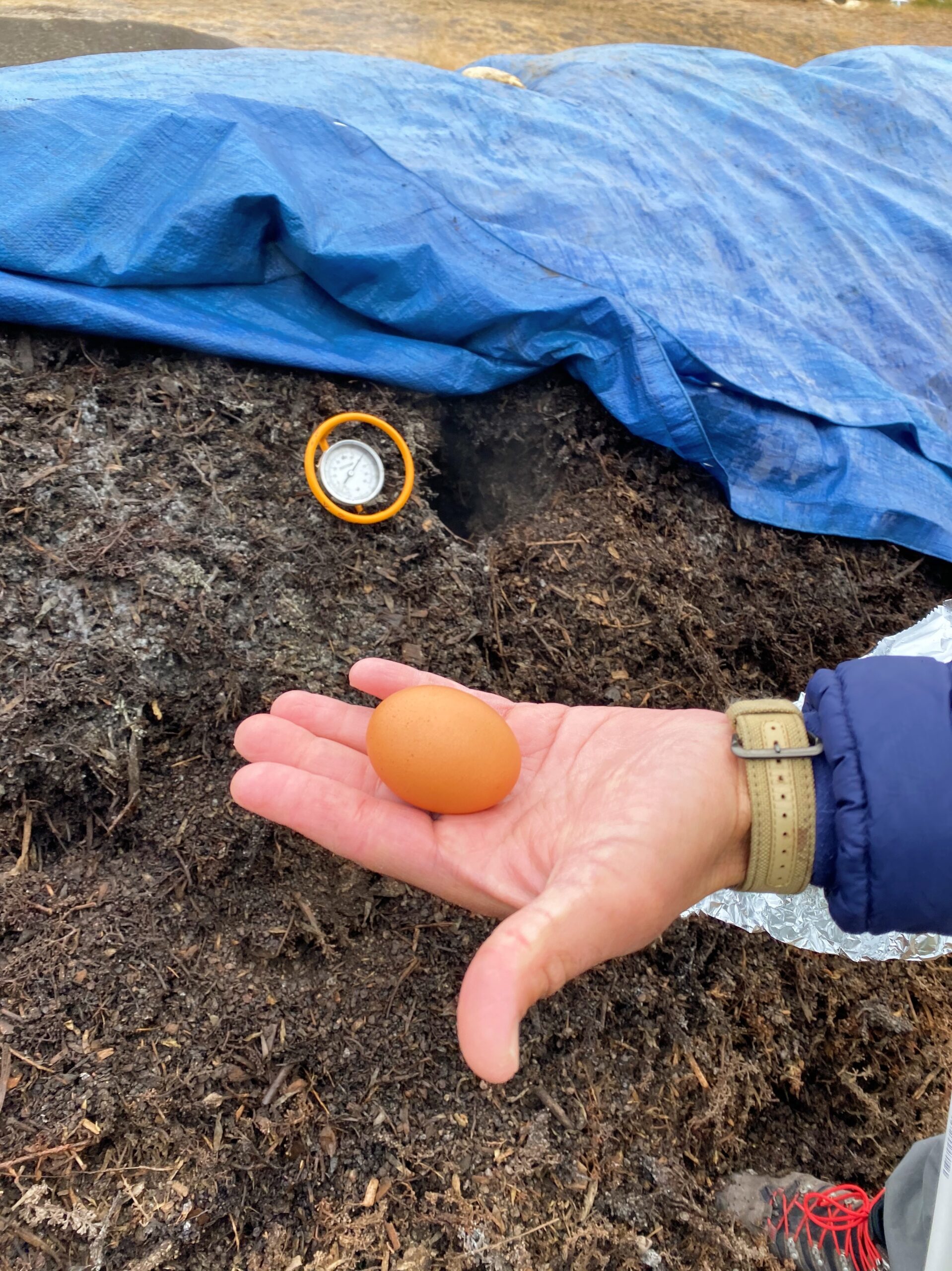
03. Cabernet sauvignon diversity
2023 has been a nearly perfect vintage for our Bordeaux grapes, specifically Cabernet Sauvignon. Heart Hill Vineyard is an extreme site well suited to high-quality viticulture, and we embraced diversity when planting the vineyard. This photo is a great example: each cluster was grown within a few hundred yards of each other, and the vines were farmed identically and were picked on the same morning. But differences in clone, vineyard facing and soil type create wildly different looking (and tasting) grapes.
Heart Hill Vineyard has steep hillsides with a wide variety of facings and two different types of shale: calcareous and silicious. We complemented this world-class setup from Mother Nature by planting ten different Cabernet Sauvignon clones, making it one of the most diverse Cabernet sites in the area. The diversity leads to complex, layered, single-site wines, and also gives us the chance to bottle and feature small parcels in superior vintages. 2023 looks to be one of those years!
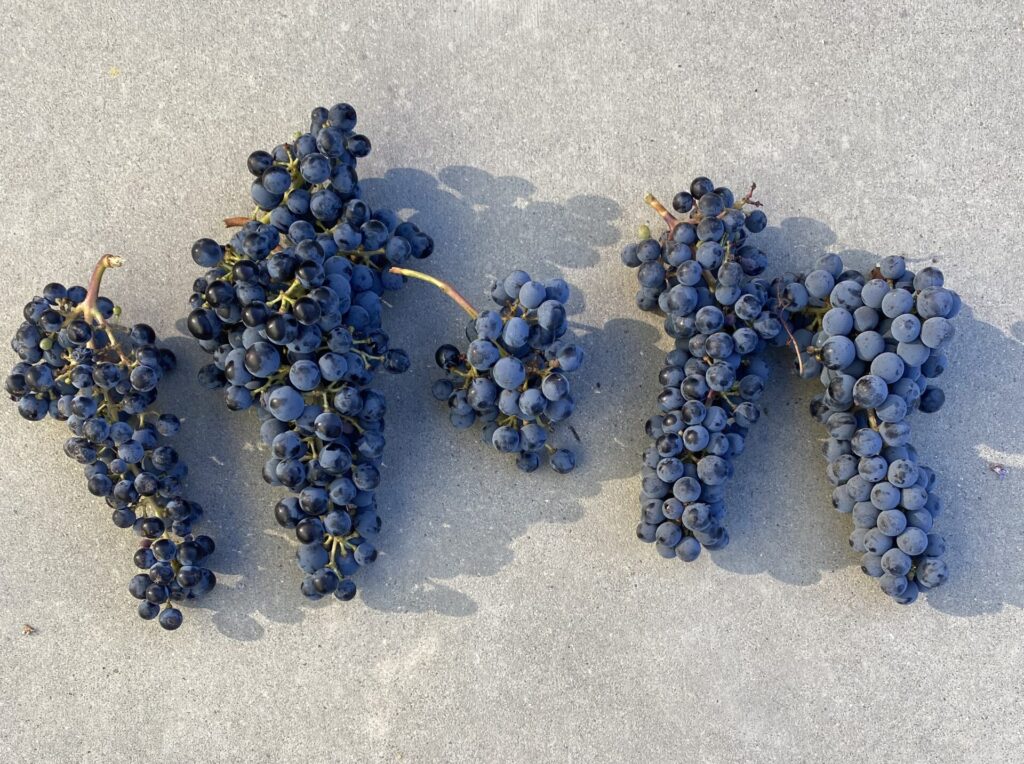
04. harvest photo gallery
They say a photo is worth 1,000 words, so stop reading and enjoy some visuals that help capture the energy, chaos and concentration of Harvest.
Team photo on the first day of Harvest! Pinot Noir and Meunier for our 2023 Sparkling Wine.
The first sunrise of Harvest over our Pinot Noir and Meunier harvest at Jespersen Ranch.
On the left, intern Molly stomps Pinot Noir for our 2023 Rose. And on the right, bins of Grenache and Syrah are stacked in front of the Craft Winery.
A sunrise harvest of Cabernet Sauvignon at Heart Hill Vineyard
Harvesting Cabernet Sauvignon by hand during sunrise. And two different clones of Cabernet Sauvignon, harvested just a few hundred yards from each other.
On the left, our crew is harvesting grapes at night. On the right, Winemaker Patrick Muran is getting a concrete tank ready for some Grenache Blanc!
Dusty (who you may know from the tasting room!) showing us how a Pinot Noir punchdown is done.
Molly fills up the basket press with Pinot Noir grapes; the vineyard is starting to show Autumn colors under a bright blue sky.
A close up of what 'digging out a tank' looks like. Beautiful color on our Pinot Noir this year!
Winemaker Molly loads up the press with a basket of Pinot Noir; we sneak a taste of our coastal, barrel fermented Chardonnay straight from the barrel!
A cool, October morning at Heart Hill Vineyard as the vines start to turn color.
2023 will be the vintage of the decade - just look at these beautiful Cabernet Sauvignon grapes!
A portrait of what the Craft Winery morphs into during harvest: fermenting Pinot Noir on the left and stacks of French Oak barrels waiting to be filled on the right!



